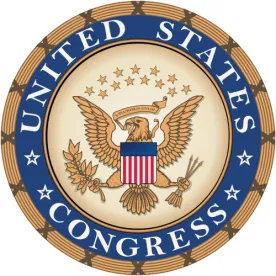With a government funding deadline looming on December 9, 2016, Congress will have its fair share of work to do upon its return after the national elections. The following is a review of the current Continuing Resolution (CR) passed in September, how Congress might decide to fund the government moving forward, and potential leadership changes in the 115th Congress for the Appropriations Committee.
September Review
The Continuing Resolution, H.R. 5325, included: $1.1 billion to address the Zika Virus, $500 million in disaster relief funding for Louisiana, Texas, and other states; $37 million in funding for opioid use reduction programs; and a full-year MilCon VA Appropriations bill. This leaves 11 appropriations measures outstanding which, in the meantime, are being funded at FY 16 levels.
Originally, Democrats insisted on the inclusion of emergency funding for the drinking water contamination crisis in Flint, Michigan as part of the overall package. However, objections were dropped when the House added a $170 million funding authorization for Flint to the Water Resources Development Act (WRDA), and the Senate included Flint money in its own version as well. This move averted a government shutdown.
What's Next
The December 9th date means Congress will either have to reach agreement on the remaining 11 appropriations measures or pass another CR. Here are the available options:
-
All 11 bills could be enacted as part of a massive omnibus;
-
The 11 could be broken into mini-buses, packages of two or more bills each;
-
A two- to three-month CR could be adopted at fiscal 2016 levels for the agencies that haven’t been funded for FY 17. A full year CR is also a possibility; or
-
Some of the easier bills could be enacted in an omnibus while the more difficult ones would have funding levels extended, therefore creating a “cromnibus,” meaning a CR for some and final numbers for the others.
Sources tell us the most likely vehicle will be a short-term CR lasting until March, after President Trump submits his new budget in February of 2017. This is likely due to the fact that Congressional Republicans are aware they do not need to bargain, as they have control of both houses of Congress and the Presidency. Pushing negotiations until March means that Republican priorities can be preserved, and all agencies will continue to be funded at current levels.
If instead there is desire to make a deal, there first needs to be a resolution on topline spending targets, specifically whether Republicans will abide by a budget agreement last year that committed equal rises in discretionary spending for domestic programs if defense increases were pursued. Democrats will view breaking the initial budget agreement as a nonstarter, only strengthening the chances that a CR will be the funding vehicle as opposed to an agreement on an omnibus.
New Leadership
As Chairman Hal Rogers (R-KY) is termed out of the House Committee on Appropriations chairmanship, he will be replaced in the 115th Congress at the start of the year. Representative Rodney Frelinghuysen (R-NJ), currently the chairman of the Defense subcommittee, has seniority and looks likely to be the next Chairman.
October brought some rumblings that Representative Robert Aderholt (R-AL) would challenge Frelinghuysen. However, Aderholt recently confirmed he will not challenge the New Jersey Republican. The House subcommittee chairs will also be changed due to retirement and term limits. Of particular note will be the decision on who will lead the Defense Appropriations subcommittee as Frelinghuysen moves to chair the full committee. Outgoing Chairman Rogers has expressed an interest, however Representative Kay Granger (R-TX) is next in line for the gavel. With the retirement of Representative Crenshaw (R-FL), Chairman of the Financial Services subcommittee, there will be an additional subcommittee chairmanship available, and, with many members interested in leadership positions, this could cause multiple changes at the subcommittee helms.
On the Senate side, Chairman Thad Cochran (R-MS) will retain his spot as head of the committee, so the coming weeks will instead focus on who Democrats will tap for ranking member as Senator Mikulski (D-MD) has retired. If Senator Durbin (D-IL) is not given the #2 leadership slot behind Chuck Schumer, many have speculated this could be an “appropriate” landing spot for him. As the most senior Democrat, Senator Patrick Leahy (D-VT) is also rumored to be considered, but this would mean abandoning the Judiciary Committee.
John Lee is co-author of this article.



 />i
/>i

